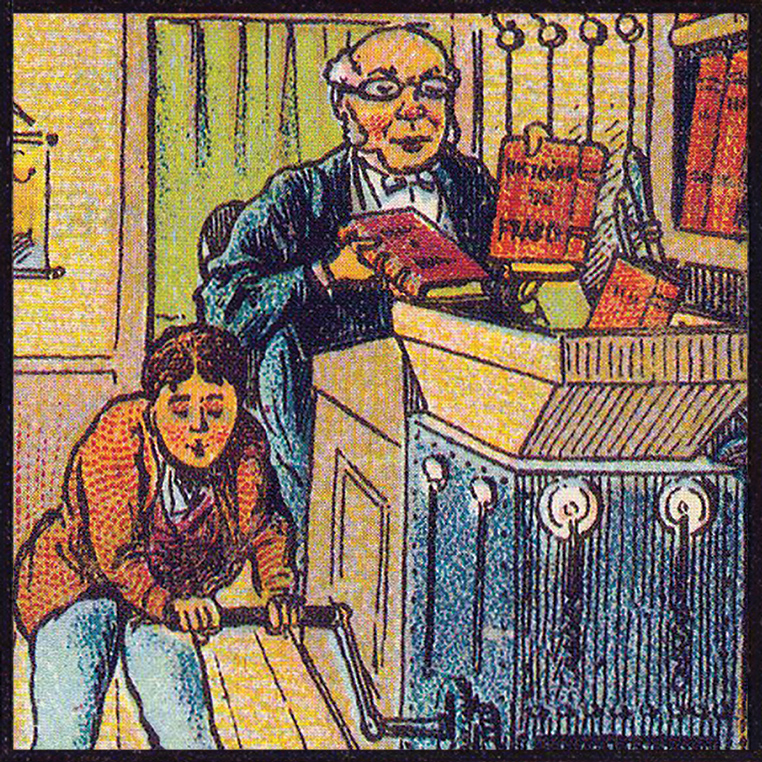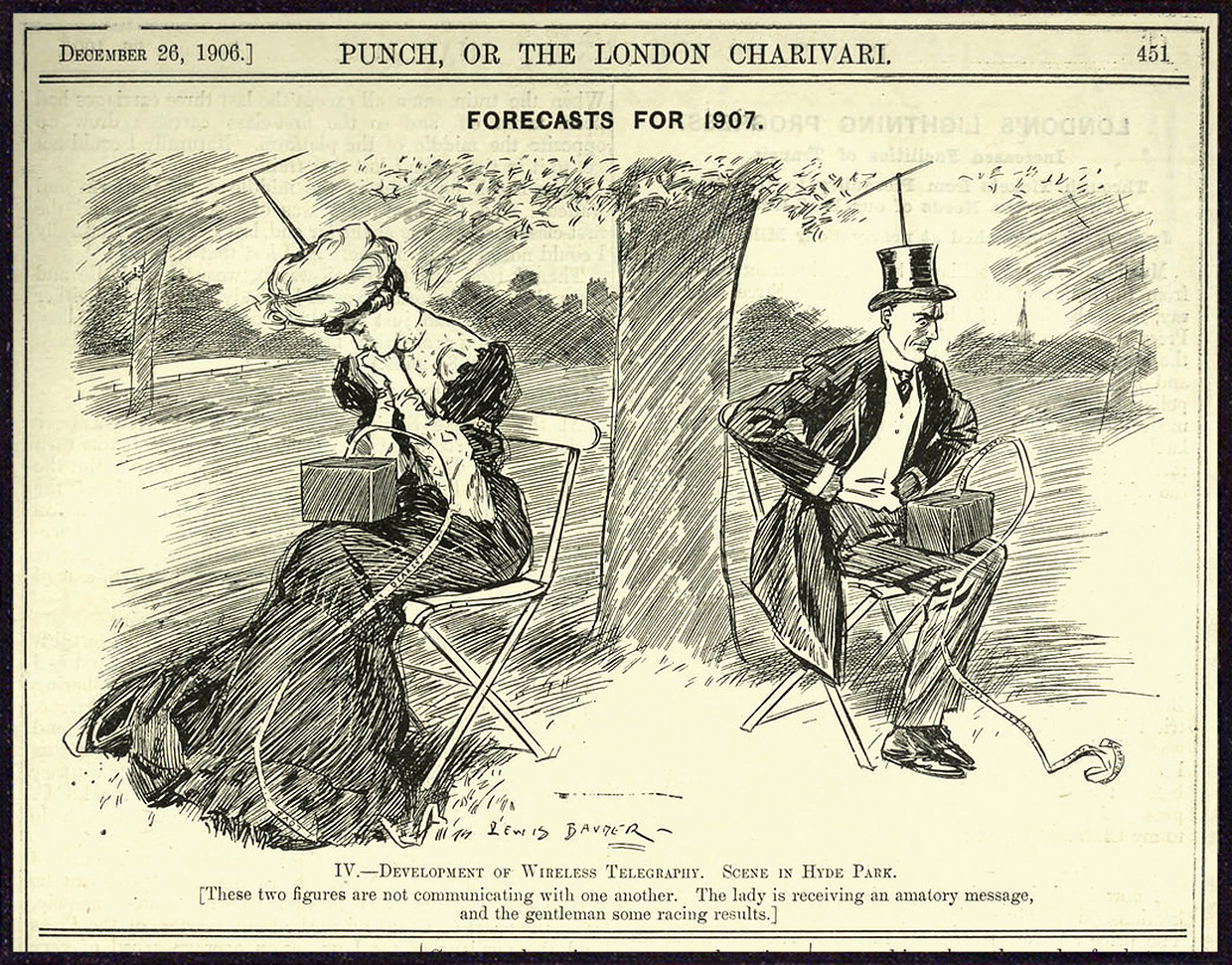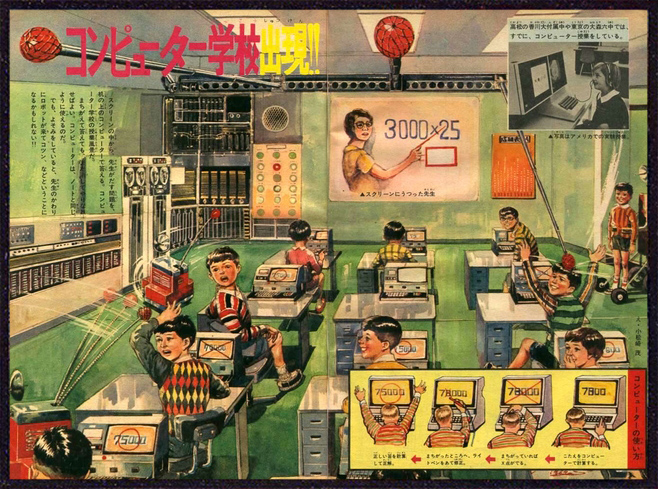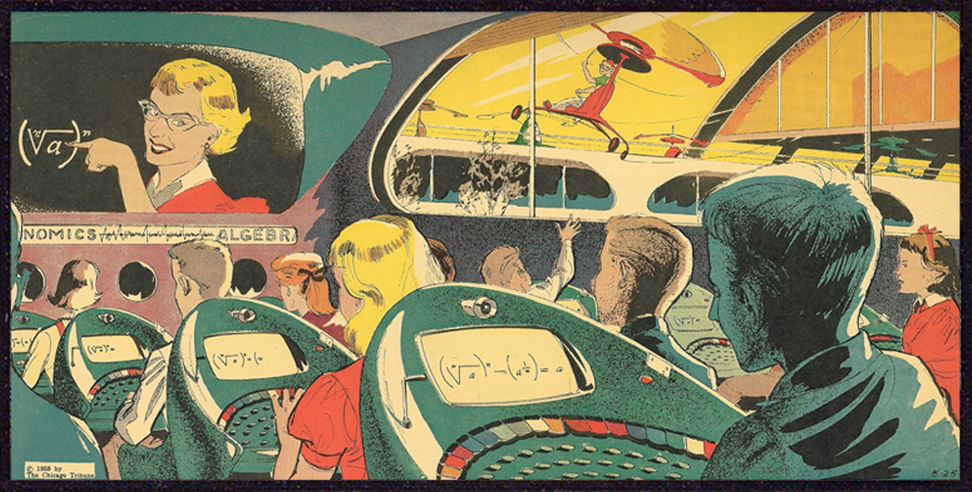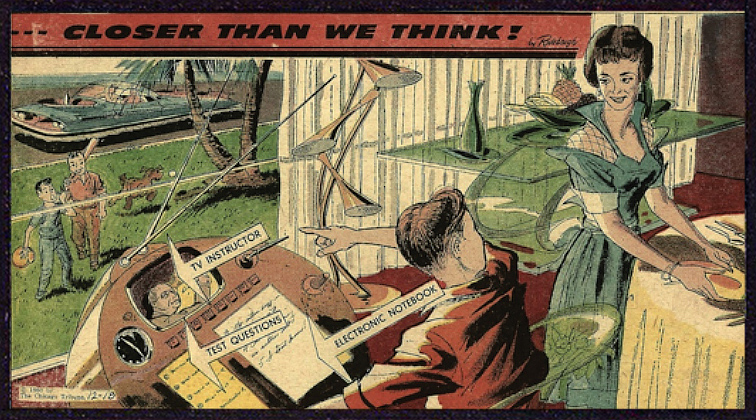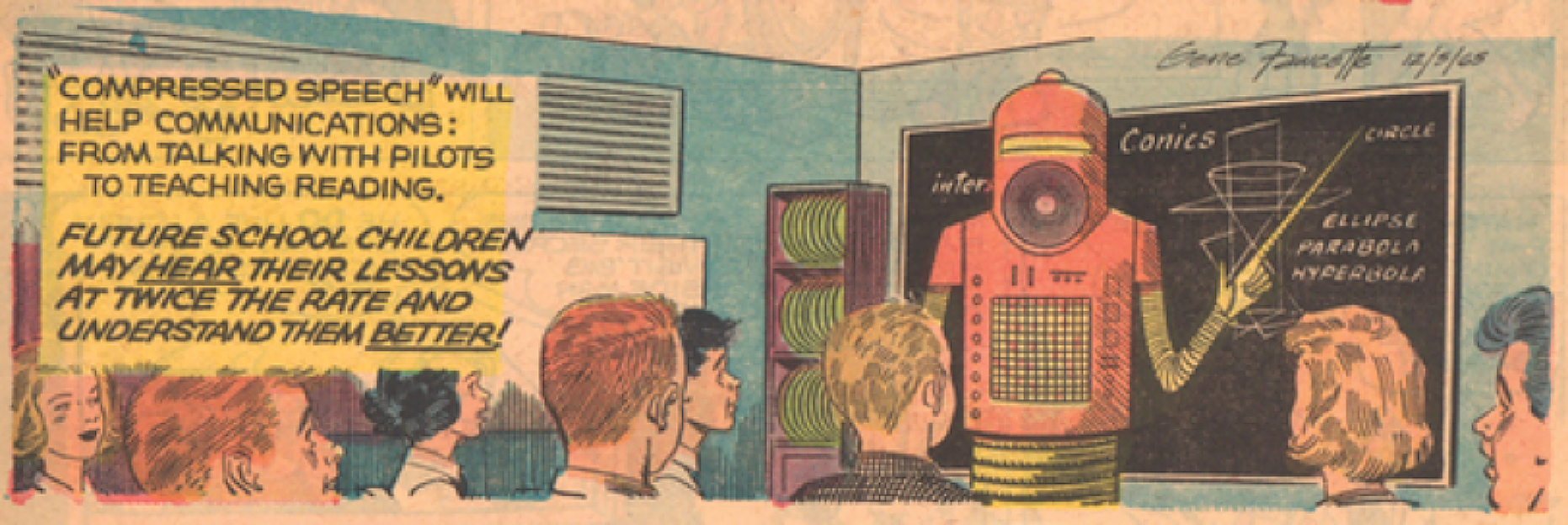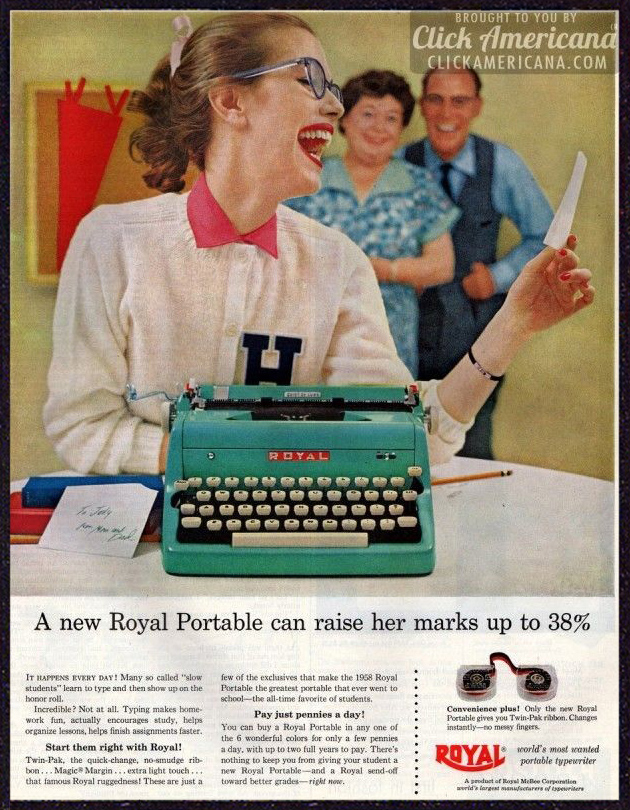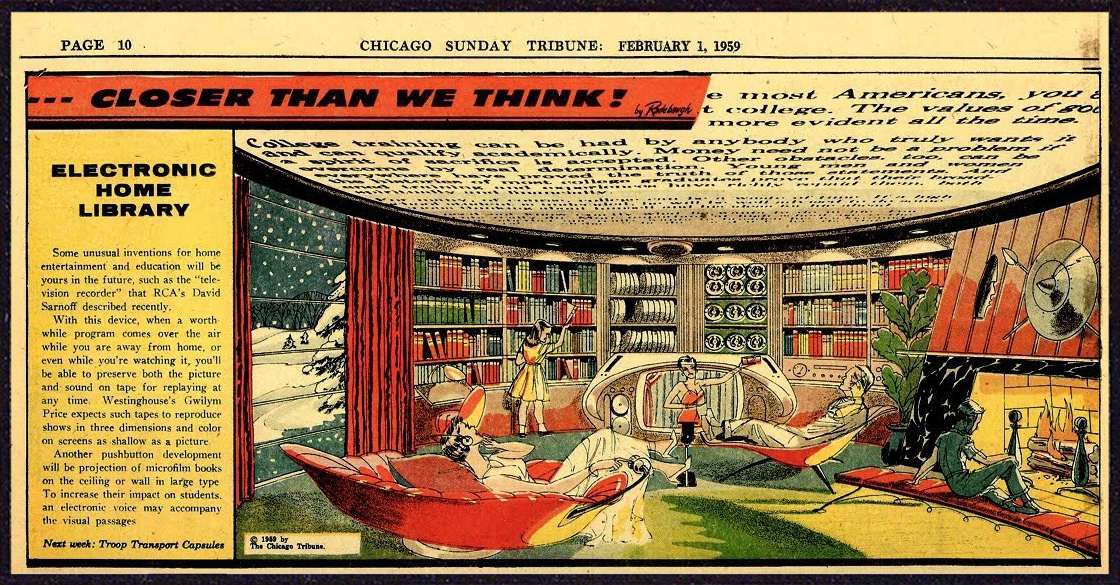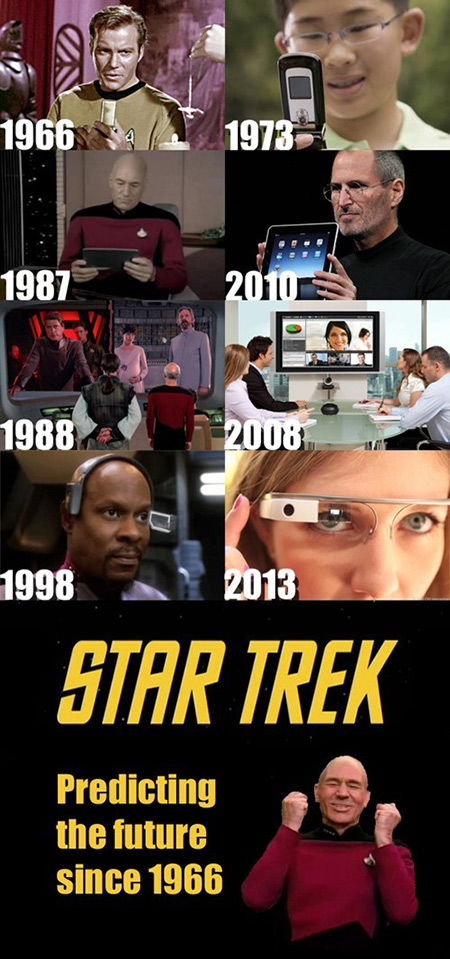There is an emerging field of academic inquiry related to this line of thinking. Self-proclaimed “time capsule nerd” Matt Novak calls it paleofuture, while “ed-tech’s Cassandra” Audrey Watters calls it the history of the future. Instead of focusing exclusively on representations of the past (the work of historians) or on those of the future (the work of futurists), paleofuturists concentrate on representations of the future in the past. Since the 19th century, technology permeates so many images of the future that, in many ways, paleofuture often amounts to representations of a tech-rich future in a relatively tech-poor past.
Paleofuture artifacts are amazing in many respects. For nostalgic reasons, I’m fond of predictions from the 1950s and 1960s about life in the 21st century, such as Philco-Ford Corporation’s remarkable 1967 film Home of the Future: Year 1999 A.D. (world fairs repeatedly turned to Home of the Future exhibits). Other films from this time reveal as much about the decades they were conceived in as the one they imagine. The Monsanto House of the Future, for example, loudly sings the praises of “man-made fibers” and plastics, at one point rhetorically asking “Is everything of plastic?” and breathlessly answering: “Almost! . . . a dream of the future brought to reality by Monsanto.”
However, much older paleofuture artifacts are uniquely captivating. One of the best-known history-of-the-future collections is a series of fin de siècle cards created for cigar boxes by the illustrator Jean-Marc Côté to depict advances imagined to be ubiquitous “in the year 2000” (En L’An 2000). In 1986, Isaac Asimov discovered and published them with his commentary in the book Futuredays: A Nineteenth-Century Vision of the Year 2000. The images typically feature a technology-rich future, with technology “improving” everything, from barbering to farming.








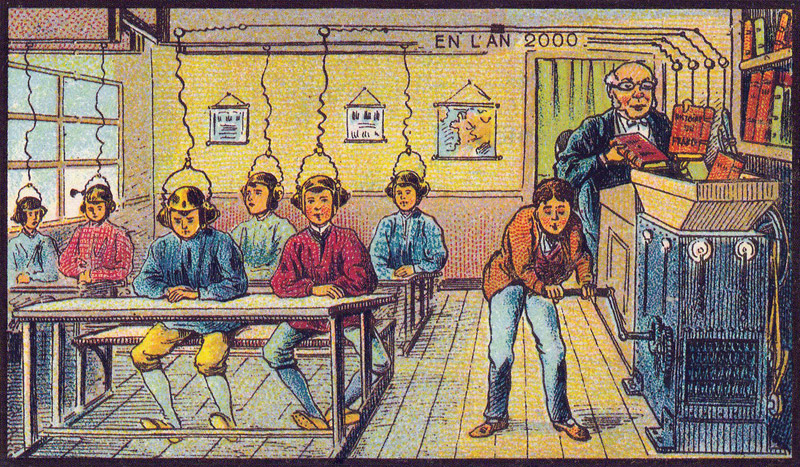
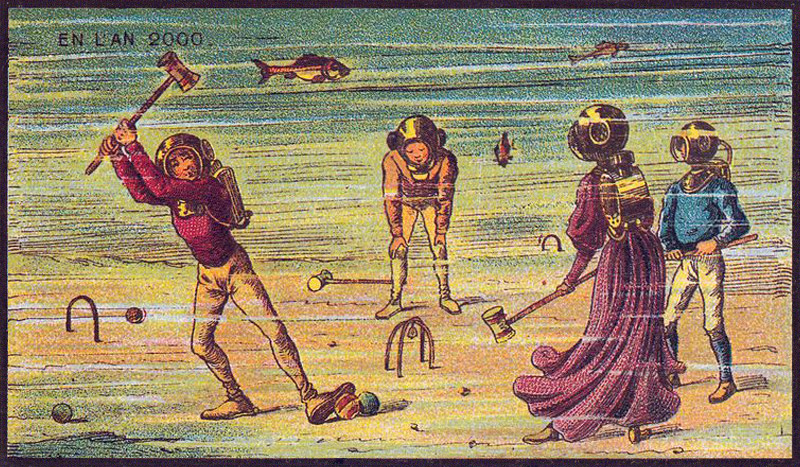
[SOURCE: Public Domain Review]
It’s clear that the century that conceived of the Industrial Revolution imagined a future world in which technology would ease the burden of work and redefine leisure time.
It’s tempting at times to reduce considering images like these to a series of self-congratulatory chortles. In his commentary on the illustrations, Asimov himself notes that it would be hard to swing a mallet under water and that a wooden ball would float. It’s especially tempting to snicker because of the many, many outrageous tech-utopian historical advertisements we’ve all seen promising that new discoveries and technologies will cure all ills. There’s asthma cigarettes, cocaine toothache drops, asbestos (the “magic mineral”), and a stunning array of radium health and beauty products. The brochure for the deeply discomfiting radium suppositories of 1930 promises that “weak discouraged men” will “bubble over with joyous vitality” using the “perfectly harmless” product.
I imagine we laugh today because we have not given much thought to what people in future centuries will make of pet rocks, mood rings, acoustic couplers, fat-free potato chips, 1970s modems, early cell phones, and “portable” technologies—or what they will think of recent heady claims about edtech products that amount to “a robot tutor in the sky that can semi-read your mind.”








